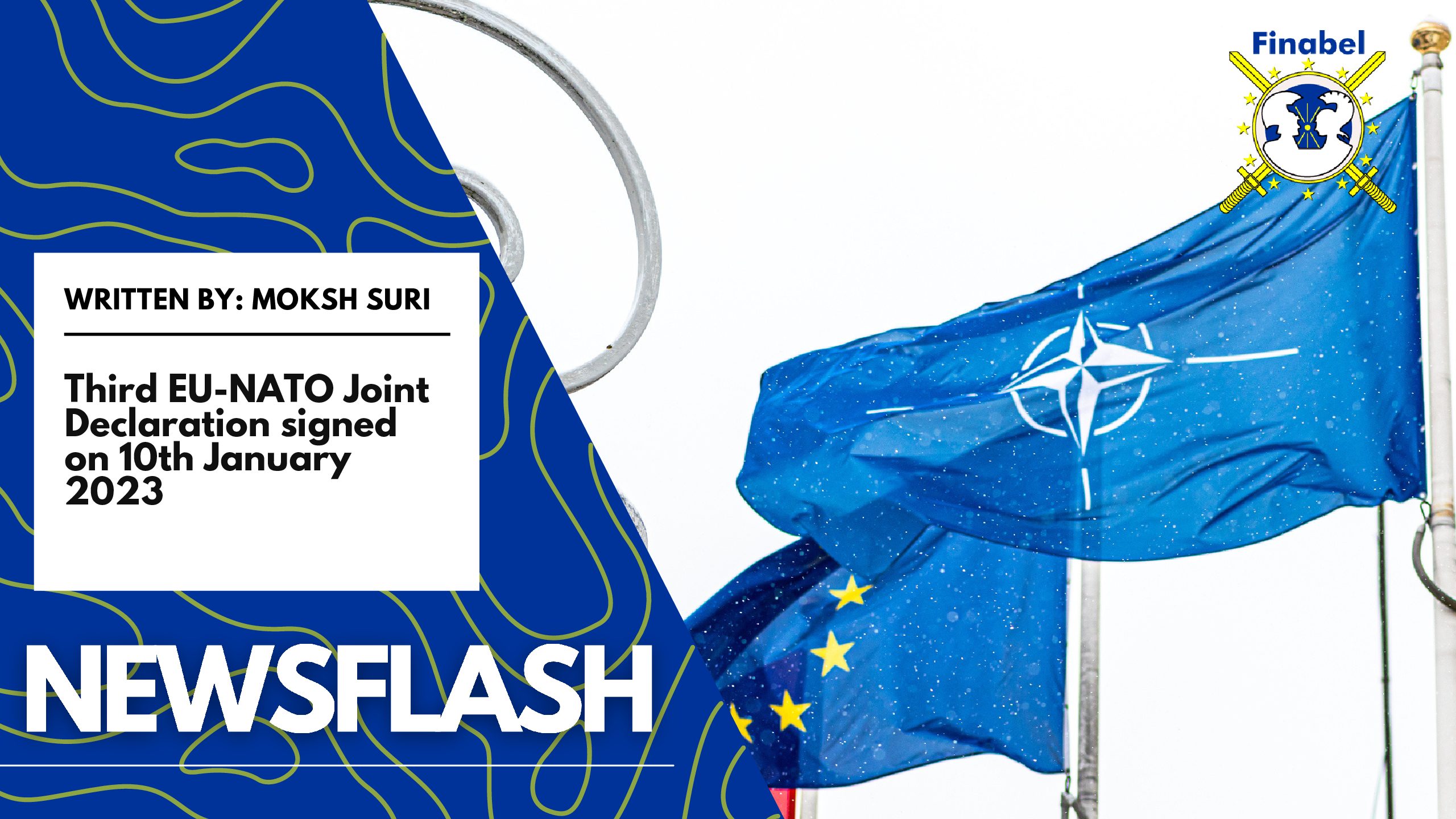Written by Moksh Suri
Edited by James Edward Colombo
On 10th January 2023, NATO Secretary General Jens Stoltenberg; the President of the European Council, Charles Michel; and President of the European Commission Ursula von der Leyen signed the 3rd EU-NATO Joint Declaration in Brussels. The first and second joint declarations between the EU and NATO were signed in 2016 and 2018 respectively.
Experts from the Centre for Strategic and International Studies have noted that substantively the declaration outlines several areas for deepened EU-NATO cooperation (Monaghan et al., 2023). The declaration noted that “unprecedented progress”(EU-NATO Joint Declaration, 2023. p.11) had been achieved in countering hybrid and cyber threats, operational cooperation including maritime issues, military mobility, defence capabilities, defence industry and research, exercises, counter-terrorism, and capacity-building of partners (CSIS, 2023).
The Declaration further identified key areas for deepening cooperation to address “geostrategic competition, resilience issues, protection of critical infrastructures, emerging and disruptive technologies, space, the security implications of climate change, as well as foreign information manipulation and interference” (EU-NATO Joint Declaration, 2023, p.12). During the Joint Press Conference, the NATO Secretary General and the President of the European Commission also announced the launch of the EU-NATO Taskforce which will primarily focus on resilience and critical infrastructure protection (as cited in CSIS, 2023; Business Standard, 2023).
The Joint Declaration further reflects the strategic priorities agreed upon last year in NATO’s Strategic Concept as well as the EU’s Strategic Compass released against the backdrop of Russia’s war against Ukraine. Another key observation is the language adopted when referring to China. The Joint Declaration stipulates that “China’s growing assertiveness and policies present challenges that we need to address” (EU-NATO Joint Declaration, 2023, p.5). This represents a substantive change from the language used in the EU’s Strategic Compass (2022) which describes China as “a partner for cooperation, an economic competitor and a systemic rival.”
Finally, the Joint Declaration recognizes the value of a more robust European defence which contributes positively to the transatlantic security and is complementary to and interoperable with NATO (EU-NATO Joint Declaration, 2023, p.8). The language here is designed to reinforce NATO’s primacy while also reiterating that EU defence initiatives will create a strong partner for the transatlantic security alliance better equipped for burden sharing.
References
Business-Standard. (2023, January 12). EU, NATO set up Joint Task Force to protect critical infrastructure. Business Standard News. Retrieved January 20, 2023, from https://www.business-standard.com/article/international/eu-nato-set-up-joint-task-force-to-protect-critical-infrastructure-123011101601_1.html
Monaghan, S., Wall, C., Svendsen, O., & Martinez, S. (2023, January 13). Does the new EU-NATO Joint Declaration matter? CSIS. Retrieved January 20, 2023, from https://www.csis.org/analysis/does-new-eu-nato-joint-declaration-matter
NATO. (2023, January 10). Joint declaration on EU-NATO cooperation by the president of the European Council, the president of the European Commission, and the secretary general of the North Atlantic Treaty Organization. NATO. Retrieved January 20, 2023, from https://www.nato.int/cps/en/natohq/official_texts_210549.htm
NATO. (2023, January 10). NATO and European Union Leadership Sign Third Joint Declaration. NATO. Retrieved January 20, 2023, from https://www.nato.int/cps/en/natohq/news_210523.htm




